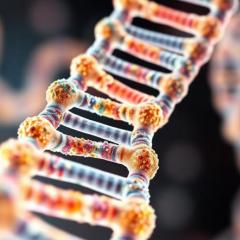In the largest study of its kind to date, UQ researchers have identified 48 genetic variants that influence if a person is left-handed, right-handed or ambidextrous.
The research led by the University of Queensland and QIMR Berghofer Medical Research Institute also confirmed that environment plays a far larger part than genes in hand use preference.
UQ Diamantina Institute Professor David Evans said 41 of the identified genetic variants influenced a person’s chances of being left-handed. Seven were associated with ambidexterity, which describes when a person is equally proficient with each hand.
“The 41 genetic variants influencing left-handedness were different to the seven we identified for ambidexterity, and we saw very little correlation between the results for the two traits,” Professor Evans said.
"Although there is an enduring fascination with why some people are left or right-handed or both, understanding why some people are left-handed and others right-handed is also an important research question because handedness can influence brain structure and the way different functions are located within the brain."
Researchers analysed genetic data from more than 1.7 million people, making the study one of the largest genetic investigations of a complex trait conducted to date.
The large data set also confirmed that the influence of genetics on handedness was relatively modest, and could only account for a small amount of the variation in handedness, whereas environmental factors were likely to play a much more important role.
“This percentage was similar for ambidexterity, meaning factors such as injuring a hand or training by playing sport or musical instruments are likely to have a strong role in a person’s ability to use both hands equally well," he said.
“Importantly, our study also provided no evidence that genes that influence on which side of the body some organs are positioned played a role in determining handedness.”
Professor Evans said while handedness had been studied extensively in the past, up to now fewer than five genetic variants that influence it had been identified.
“It was only by combining data from 32 cohorts from the International Handedness Consortium, 23andMe and the UK Biobank that we had enough data to identify these 48 genetic variants that influence hand preference,” he said.
“These large numbers of participants provide the statistical power to detect the effect of genes that have even very small effects on handedness. This also highlights that large studies are needed to understand the genetic factors influencing other neurological traits and conditions and why participation in research studies is so important.”
Hand preference is first observed during gestation as embryos begin to show single arm movements. The rate of left-handedness differs across countries from about three to 12 per cent. In Australia, the UK and the US around 10 per cent of the population is left-handed.
The study was published in Nature Human Behaviour, DOI: 10.1038/s41562-020-00956-y.
Media: Professor David Evans, d.evans1@uq.edu.au; Faculty of Medicine Communications, med.media@uq.edu.au, +61 7 3365 5133, +61 436 368 746.



